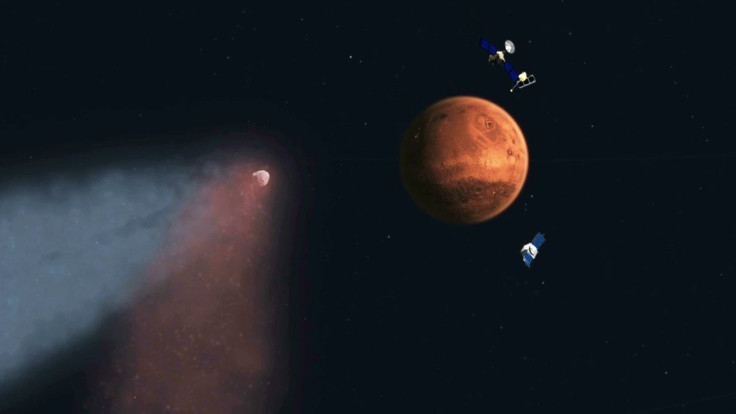Comet Flyby Caused Meteor Shower On Mars: Scientists

Astronomers, using data from two NASA and one European spacecraft, have found that the Comet Siding Spring, which sailed by Mars on Oct. 19, spawned debris over the planet, creating a very strong layer of ionized particles in the Martian atmosphere.
Scientists used data from observations carried out by NASA's Mars Atmosphere and Volatile Evolution (MAVEN) mission and Mars Reconnaissance Orbiter (MRO), and a radar instrument on the European Space Agency's Mars Express spacecraft to reveal that debris from the comet added a temporary, but strong layer of ions to Mars’ ionosphere, which is an electrically charged layer high above the planet.
“In these observations, scientists were able to make a direct connection from the input of debris from a specific meteor shower to the formation of this kind of transient layer in response; that is a first on any planet, including Earth,” NASA said in a statement.
During its encounter with Mars last month, Comet Siding Spring passed only 87,000 miles from Mars, which is half the distance between Earth and the moon, and less than one-tenth of the distance of any known comet flyby of Earth. The comet travelled from the most distant region of our solar system, called the Oort Cloud, which is believed to contain leftovers from the formation of the solar system some 4.6 billion years ago.
According to scientists, dust from the comet was vaporized high in the Martian atmosphere, producing something like a meteor shower.
“This historic event allowed us to observe the details of this fast-moving Oort Cloud comet in a way never before possible using our existing Mars missions,” Jim Green, director of NASA’s Planetary Science Division at the agency’s Headquarters in Washington, said in the statement.
In addition to a new layer of charged particles, Siding Spring’s approach showed other changes in Mars’ upper atmosphere, such as significant chemical fingerprints of magnesium, iron and other metals shed by the comet, Reuters reported.
© Copyright IBTimes 2024. All rights reserved.






















